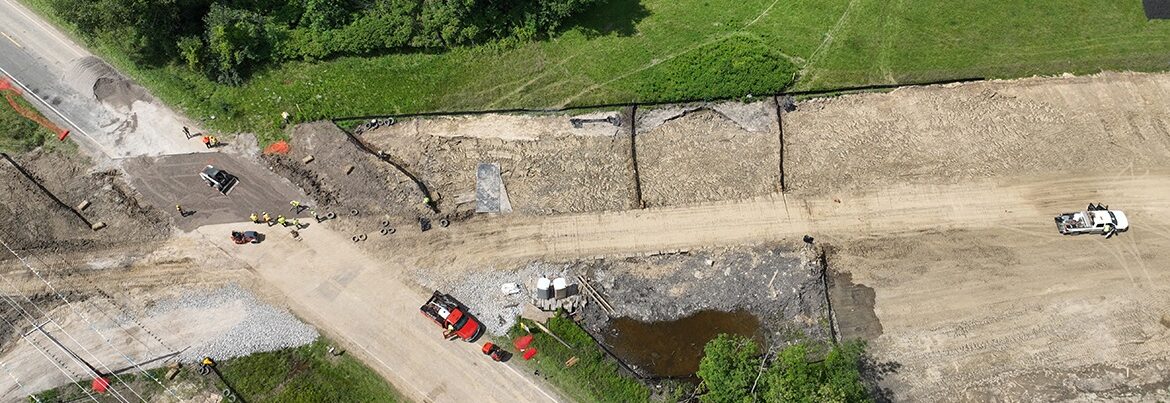Working with Utility Companies to Protect County Drains

This article was originally featured in MACDC’s Pipeline Magazine.
By: Lauren Burton, Attorney, Clark-Hill and Ron Hoeft, PE, PEA Group
Drain commissioners and drainage boards are tasked with the ongoing responsibility to protect the county and intercounty drains under their jurisdiction. This responsibility includes responding to, and working with, utility companies to allow utility crossings of drains. These utility crossings must adhere to the permit requirements of the drain commissioner or drainage board with jurisdiction. The most common utilities include pipelines, communication cables, sanitary sewer lines, water mains, and electrical lines.
Existing utility crossings that were constructed under a permit should be reviewed for compliance with the permit requirements. Permits should be kept on file in the office of the drain commissioner for future compliance reviews. If found to be out of compliance, the Michigan Drain Code authorizes drain commissioners and drainage boards the authority to demand compliance or compel the removal of the utility. Similarly, if utilities are constructed in drain rights-of-way without a permit, the utility is considered an obstruction of the drain and the drain commissioner or drainage board has the authority to compel its removal.
For new utility crossing requests, drain commissioners and drainage boards should review the proposed project as no two projects are the same and determine appropriate permit requirements. Depending on the utility company, utility crossing projects could be limited to a sole crossing of a drain or could include multiple crossings spanning a single or several drainage districts.
To initiate the permit review process, a drain commissioner or drainage board may choose to hire consultants to review the project plans.
Several factors should be considered during plan review, such as the scope of the project, the length of proposed construction, and whether the drain is open channel or enclosed pipe.
These factors play a role in determining permit requirements such as deposits or inspection fees, minimum depth requirements, and construction methods. For example, jack and bore vs. directional drill vs. open cut. Permits should also cover appropriate site restoration requirements and may provide for adequate security in order for the drain commissioner or drainage board to perform site restoration if the utility company fails to do so.

Jack and bore crossing of the Locke Drain, City of Perry, Shiawassee County.
As the landowners and public corporations within a drainage district should not be responsible for the costs to review proposed utility crossings, permits should require the utility company to cover any engineering, inspection, administrative, legal, and recording costs. In addition, permits should require the utility company to agree to indemnify the drainage district for any damages to persons or property resulting from the construction of their utility.
During construction of the utility crossing, the drain commissioner or drainage board should have a competent inspector on site in order to ensure the crossing is being performed pursuant to the permit requirements and that no illicit discharges enter the drain.
Lastly, it is crucial to require the utility company to provide as-built drawings after construction is completed. These drawings should be kept on file in the office of the drain commissioner for future compliance review and notice to future drain commissioners that there are utility crossings present.

Open cut through Dietz Creek Drain approximately 25 feet deep to install 36-inch gas pipeline.
For More Information

